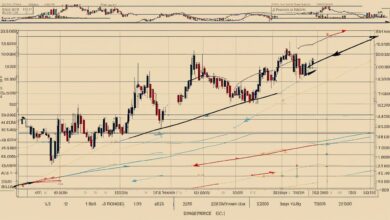Delta-Gamma Hedging: Advanced Techniques for Managing Portfolio Risk

Introduction
Managing portfolio risk is crucial in options trading. The highly volatile nature of the market requires strategies that can protect investments against unpredictable price changes. This is where delta-gamma hedging comes into play.
Delta-gamma hedging is an advanced technique designed for experienced traders. It combines two key measures—delta and gamma—to create a more stable portfolio. Delta measures how much an option’s price changes compared to the underlying asset, while gamma indicates how much delta itself changes as the asset’s price fluctuates. Together, these metrics provide a comprehensive approach to risk management, addressing both small and large price movements.
The purpose of this article is to offer in-depth insights into delta-gamma hedging for professionals. We’ll explore:
- The fundamental concepts: Understanding delta and gamma.
- Practical applications: How to implement delta-gamma hedging.
- Advanced techniques: Going beyond basic strategies.
By the end of this article, you’ll have a solid understanding of delta-gamma hedging and be equipped with the knowledge needed to employ this sophisticated strategy effectively.
Understanding Delta and Gamma: The Building Blocks of Delta-Gamma Hedging
Delta and Gamma are fundamental components in the realm of options trading, often referred to as the “Greeks.” These measures are essential for traders aiming to implement advanced risk management techniques like delta-gamma hedging.
Delta: Measuring Sensitivity to Price Changes
- Definition: Delta represents the rate of change in an option’s price relative to a one-unit change in the price of the underlying asset. Essentially, it quantifies how much an option’s value is expected to move when the underlying asset’s price shifts.
- Range: Delta values range from 0 to 1 for call options and 0 to -1 for put options. A delta of 0.5 indicates that for every $1 increase in the underlying asset’s price, the option’s price would rise by $0.50.
- Usage: Understanding delta helps traders gauge their exposure to small price movements in the underlying asset. It is crucial for creating delta-neutral positions that minimize portfolio sensitivity to minor market fluctuations.
Gamma: Assessing Delta’s Rate of Change
- Definition: Gamma measures the rate of change in delta relative to a one-unit change in the price of the underlying asset. It provides insight into how stable or volatile an option’s delta is as market conditions evolve.
- Range: Gamma values are always positive for both call and put options, with higher gamma indicating more significant changes in delta due to price movements in the underlying asset.
- Usage: By understanding gamma, traders can predict how their portfolio’s delta will change over time, allowing them to make more informed adjustments. Gamma is particularly important when dealing with larger price movements, where maintaining a stable delta-neutral position requires continuous monitoring and rebalancing.
Integrating Delta and Gamma for Effective Risk Management
Grasping these two Greeks is vital for sophisticated risk management strategies like delta-gamma hedging:
- Delta Hedging: Involves adjusting a portfolio to achieve a net delta close to zero, reducing sensitivity to small price changes.
- Gamma Hedging: Focuses on maintaining stability by offsetting changes in delta through dynamic adjustments, ensuring minimal impact from larger market shifts.
Both measures work together seamlessly, enabling traders to manage first-order risks (delta) and second-order risks (gamma) effectively. Mastery of these concepts is essential for anyone looking to enhance their risk management techniques and achieve precise control over their portfolios amidst varying market conditions.
The Power of Delta-Gamma Hedging: Managing Portfolio Risks with Precision
The delta-gamma hedging strategy stands out as a sophisticated approach for managing portfolio risks in options trading. By employing this technique, traders can mitigate the adverse effects of both small and large price movements in the underlying asset. This dual-layered protection is achieved through the combined use of delta and gamma—two crucial Greeks that measure different dimensions of risk.
Delta, as previously mentioned, measures the sensitivity of an option’s price to small changes in the price of the underlying asset. However, delta alone does not account for larger market shifts. This is where gamma comes into play. Gamma measures the rate at which delta itself changes as the price of the underlying asset fluctuates. Together, these two metrics provide a comprehensive framework for addressing different levels of market volatility.

Dynamic Adjustments for Delta-Gamma Neutrality
Achieving delta-gamma neutrality requires dynamic adjustments within your portfolio. This involves continuously rebalancing positions to ensure that:
- The overall delta of the portfolio remains close to zero.
- The gamma is managed so that changes in delta are minimized during larger price movements.
To accomplish this, traders often use a combination of options and other financial instruments:
- Options Spreads: Implementing spreads such as straddles or strangles can help fine-tune both delta and gamma.
- Underlying Assets: Holding positions in the underlying stock or other assets can be adjusted to counterbalance changes in delta.
- Frequent Rebalancing: Regularly monitoring and rebalancing positions ensures that both delta and gamma remain within desired limits.
For instance, if you hold a position in Stock XYZ with a positive delta, a sudden increase in the stock’s price will increase your portfolio’s value but also its risk exposure. By adding options with negative delta or adjusting existing ones, you can bring your portfolio back to a neutral stance, effectively mitigating potential losses from further price increases.
In essence, the power of delta-gamma hedging lies in its ability to provide precise control over your portfolio’s risk profile, enabling you to navigate complex market conditions with greater confidence and stability. Additionally, some traders explore techniques like gamma scalping, which leverages gamma’s properties for further risk management and profit optimization.
Implementing Delta-Gamma Hedging Strategies: A Step-by-Step Approach
Example Scenario with a Specific Stock
To illustrate the practical implementation of delta-gamma hedging, consider the example of Stock XYZ. This example demonstrates constructing portfolios and dynamic rebalancing techniques to achieve a delta-gamma neutral position.
1. Initial Assessment:
- Stock XYZ Price: $100
- Option Details:
- Call Option with Strike Price $100, Delta = 0.5, Gamma = 0.05
- Put Option with Strike Price $100, Delta = -0.5, Gamma = 0.05
2. Calculate Total Delta and Gamma:
Assume holding 10 call options and 10 put options.
- Total Delta: ( (10 \times 0.5) + (10 \times -0.5) = 0 )
- Total Gamma: ( (10 \times 0.05) + (10 \times 0.05) = 1 )
3. Adjust for Delta Neutrality:
To achieve delta neutrality, you need to offset the total delta of options with the underlying asset.
- Since total delta is already zero in this case, no additional stocks need to be bought or sold.
4. Adjust for Gamma Neutrality:
To hedge gamma risk, incorporate additional options or other derivatives.
- Suppose an additional option with Gamma = -1 is available.
- Adding this option results in total gamma: ( 1 + (-1) = 0 )
The portfolio now holds:
- Options:
- 10 call options
- 10 put options
- Additional option with Gamma = -1
- Total Delta: Neutral
- Total Gamma: Neutral
Dynamic Rebalancing in Action: Adapting to Market Conditions
Maintaining a delta-gamma neutral portfolio requires continuous monitoring and timely adjustments:
- Market Fluctuations: As Stock XYZ’s price changes, the deltas and gammas of existing options will also change.
- Rebalancing Steps:
- Re-calculate total delta and gamma after any significant price movement using this guide.
- Adjust positions by buying or selling underlying assets to maintain delta neutrality.
- Incorporate new options or adjust existing ones to maintain gamma neutrality.
For instance, if Stock XYZ rises to $105:
- The delta of call options may increase to 0.6 and put options decrease to -0.4.
- Re-calculate total delta and gamma based on new values.
- Adjust holdings accordingly.
Dynamic rebalancing ensures that your portfolio remains aligned with market conditions, mitigating risks from both small price movements (delta) and larger shifts (gamma).

Dynamic Rebalancing in Action: Adapting to Market Conditions
Dynamic rebalancing is crucial for maintaining a delta-gamma neutral portfolio amid constant market fluctuations. This process involves continuous monitoring and timely adjustments to ensure the portfolio remains neutral to both delta and gamma.
Step 1: Calculating Delta and Gamma for Options Positions
Delta Calculation: Measure the rate of change in the option’s price relative to the underlying asset.
Gamma Calculation: Determine how much delta changes as the underlying asset’s price fluctuates.
Step 2: Achieving Delta Neutrality through Position Adjustments
Adjust positions by buying or selling options or underlying assets.
Example: If your portfolio has a positive delta, sell shares or buy put options to bring it back to neutrality.
Step 3: Methods for Achieving Gamma Neutrality in a Portfolio
Use options that help offset gamma risk, such as spreads or complex option structures.
Example: Implement butterfly spreads to balance out gamma exposure.
Continuous monitoring is essential. Volatile markets can quickly shift delta and gamma values, necessitating frequent rebalancing. Tools like real-time analytics and trading algorithms can assist in making timely adjustments, ensuring your portfolio remains neutral and resilient against market swings.
Advanced Techniques for Delta-Gamma Hedging: Going Beyond Basics
Constructing a delta-gamma neutral portfolio often involves multiple layers of sophistication. Using complex options structures such as spreads allows you to fine-tune your hedging strategy. Spreads, including butterfly and calendar spreads, can be effective in achieving both delta and gamma neutrality.
Step-by-Step Approach:
- Calculating Delta and Gamma for Options Positions: Start by calculating the delta and gamma for each options position within your portfolio. Utilize real-time data and advanced software tools to obtain accurate figures.
- Achieving Delta Neutrality through Position Adjustments: Adjust positions dynamically to maintain a delta-neutral stance. You might buy or sell underlying assets or options contracts based on their delta values.
- Methods for Achieving Gamma Neutrality in a Portfolio: Implement spreads or other complex options structures to counteract gamma changes. For instance, if your portfolio’s gamma is positive, consider adding positions with negative gamma to balance it out.
Quantitative models for market forecasting are invaluable in this context. These models analyze market trends and predict future movements, allowing you to make preemptive adjustments to your portfolio.
Key Techniques:
- Spreads: Employ strategies like butterfly or calendar spreads to refine both delta and gamma neutrality.
- Quantitative Models: Use statistical techniques and machine learning algorithms to forecast market conditions and adjust your hedging strategy accordingly.
By integrating these advanced techniques, you enhance the robustness of your delta-gamma hedging strategy, making your risk management approach more resilient against market volatility.
Benefits and Challenges of Delta-Gamma Hedging: A Comprehensive Analysis
Enhanced Risk Management through Comprehensive Approach Addressing First and Second-Order Risks
Delta-gamma hedging offers a sophisticated approach to risk management by addressing both first-order (delta) and second-order (gamma) risks. By neutralizing delta, you stabilize your portfolio against minor price movements in the underlying asset. Gamma hedging adds another layer of protection, mitigating the effects of larger price shifts. This dual-layered strategy ensures that your portfolio remains resilient against various levels of market volatility.
Improved Portfolio Performance with Dynamic Adjustments Leading to Optimized Returns
Dynamic adjustments in delta-gamma hedging allow for a more responsive portfolio management strategy. As market conditions fluctuate, you can continuously rebalance your positions to maintain delta-gamma neutrality. This constant fine-tuning helps in optimizing returns while minimizing risk exposure. The ability to adapt swiftly to market changes can result in enhanced portfolio performance, making this technique invaluable for experienced traders.
Complexity, Costs, and Market Conditions Impact on Delta-Gamma Hedging Strategies
Complexity: Calculating delta and gamma accurately requires a thorough understanding of options pricing models and the Greeks. This complexity can be a barrier for those who lack advanced mathematical skills or experience in quantitative finance.
Transaction Costs: Frequent rebalancing activities inherent in delta-gamma hedging incur transaction costs. These can add up significantly over time, impacting overall profitability. It’s crucial to weigh these costs against the benefits of maintaining a hedged position.
Market Conditions: Volatility levels in the market directly affect the stability of delta and gamma values. High volatility can lead to rapid changes in these Greeks, necessitating more frequent adjustments. Conversely, low volatility periods might require fewer interventions but offer limited opportunities for profit.
Sensitivity to Market Conditions such as Volatility Levels Affecting Stability of Delta and Gamma Over Time
Market conditions play a critical role in the effectiveness of delta-gamma hedging strategies. Volatility levels are particularly influential:
- High Volatility: In periods of high market volatility, the values of delta and gamma can change rapidly, requiring continuous monitoring and frequent rebalancing to maintain neutrality.
- Low Volatility: During stable market periods, changes in delta and gamma are less pronounced, reducing the need for frequent adjustments but also limiting potential gains from price movements.
Understanding these dynamics is essential for effective risk management through delta-gamma hedging. By staying attuned to market conditions, you can better anticipate necessary adjustments and optimize your portfolio accordingly.
The nuanced understanding of these factors allows you to leverage delta-gamma hedging effectively, balancing the benefits against inherent challenges to achieve robust portfolio management amidst varying market dynamics.
Real-World Applications of Delta-Gamma Hedging: Lessons from Financial Crises and Pandemics
The Role of Delta-Gamma Hedging During Extreme Market Volatility Events like the 2008 Financial Crisis
During the 2008 financial crisis, delta-gamma hedging proved to be a critical tool for traders managing large options portfolios. Massive market swings brought about unprecedented challenges, making traditional risk management techniques inadequate.

Case Studies on Delta-Gamma Hedging Effectiveness:
- Institutional Investors: Large hedge funds and institutional investors utilized delta-gamma hedging to stabilize their holdings amidst the steep declines in asset prices. By maintaining delta-neutral and gamma-neutral positions, they managed to cushion the impact of rapid price movements.
- Market Makers: Market makers also leveraged this strategy to mitigate risks associated with providing liquidity in highly volatile conditions. The ability to dynamically adjust positions based on shifting deltas and gammas helped them avoid significant losses during the turmoil.
Challenges Faced by Traders Employing This Strategy During Unprecedented Market Fluctuations such as the COVID-19 Pandemic
The COVID-19 pandemic brought a different set of challenges, testing the resilience of delta-gamma hedging under extreme uncertainty and rapid market shifts.
Key Challenges:
- Rapid Volatility Spikes: The sudden onset of the pandemic led to instantaneous spikes in volatility, complicating the task of maintaining delta-gamma neutrality. Traders had to react swiftly to rebalance their portfolios, often facing increased transaction costs.
- Liquidity Constraints: The high demand for liquidity during market crashes strained resources, making it difficult for traders to execute necessary adjustments without significant slippage.
- Predictive Limitations: The unprecedented nature of the pandemic meant that historical models used for predicting price movements were less effective. Misjudgments in forecasting could lead to suboptimal hedging outcomes.
Despite these obstacles, traders who effectively employed delta-gamma hedging managed to navigate through these crises with relatively controlled losses. Their experience highlights the importance of advanced risk management strategies in protecting portfolios during periods of extreme volatility.
Insights from Recent Global Economic Trends
The effectiveness of delta-gamma hedging isn’t just limited to specific crises like the 2008 financial meltdown or the COVID-19 pandemic. It also provides valuable insights into broader economic trends. For instance, during periods of economic recovery post-pandemic, as detailed in a Global Economic Prospects report by the World Bank, traders who adapted their strategies using delta-gamma hedging were better positioned to capitalize on emerging opportunities while managing associated risks.
Additionally, studies have shown that applying advanced quantitative methods in delta-gamma hedging can yield significant benefits. For example, research published in Wiley Online Library emphasizes how incorporating these techniques can enhance portfolio performance even in volatile markets.
Conclusion: Mastering Delta-Gamma Hedging for Future-Proof Trading Success
Mastering advanced risk management techniques such as delta-gamma hedging is crucial for experienced traders facing the complexities of today’s financial markets. This strategy not only equips you with the ability to mitigate risks associated with minor and significant price movements but also places you a step ahead in adapting to market volatility.
Engaging with delta-gamma hedging involves:
- Dynamic Portfolio Adjustments: Constantly fine-tuning your portfolio to maintain a delta-neutral stance, thereby minimizing the impact of small price fluctuations.
- Gamma Hedging: Addressing potential changes in delta to stabilize your portfolio against larger market shifts.
Implementing these techniques requires a precise understanding of options mechanics and vigilant monitoring of market trends. While resource-intensive, the benefits include enhanced control over volatility and improved resilience during market upheavals.
Here’s why you should prioritize this strategy:
“Advanced risk management techniques like delta-gamma hedging are not just tools but essential skills for future relevance in trading.”
Embracing these methods prepares you to navigate through unpredictable market dynamics, ensuring your portfolio remains robust against sudden changes. With continuous practice and refinement, delta-gamma hedging can become a cornerstone of your trading success.







